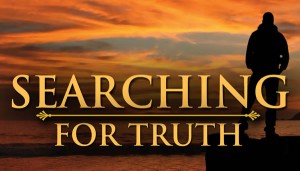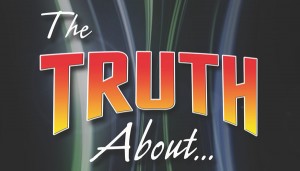As I try to point out at the beginning of each year, every Christian needs to set aside time for reading, reflecting, and renewing their commitment to the truth of God’s word; and daily Bible reading is the perfect place to start (Acts 17:11). Here is a brief outline of some of the things I have culled from my own experiences, which may help you develop healthy habits of daily reading, reflection and prayer.
We read the Bible because:
- It is how God reveals himself (1Sa 3:21; 1Co 2:11-13).
- It is how God saves us (2Ti 3:14-17; 1Pe 1:22-2:3).
- It is how God disciples us (Mat 28:18-20; John 8:31-32).
- It is how God equips us (2Ti 2:1-2, 15; Gal 1:6-9).
Getting Started:
- Develop a habit of daily reading before tackling more difficult books.
- Find a place to focus and read aloud (Luke 8:8; 9:44).
- Develop a rhythm that reflects the beauty of God’s word (Deu 6:4-9; Ecc 12:9-10).
- Reflect and pray through the text (Eph 1:15-19; 3:4-5; 2Ti 2:7; Jam 1:5).
Don’t Just Skim . . . Discover!
Observation: Discover What it Says
- Form is meaning: remember the text’s genre and style.
- Ask questions about the text, especially Why and How?
- Identify and define key words and phrases.
Interpretation: Discover What it Means
- Immerse yourself in the text’s literary and historical context.
- What is the climax of the passage and how do the other details relate to it?
- What was the writer’s takeaway for his original readers?
Application: Discover How it Works
- You’re reading someone else’s mail; application will vary.
- Look for common human experiences to build bridges to the text.
- Test your findings by other Scriptures, history and conversation.
Various Approaches:
- Maximize group studies: take notes or use handouts for further study throughout the week. On Monday, review the Sunday morning sermon; Tuesday, prepare for midweek Bible study; Wednesday/Thursday (depending on when you meet midweek), review the Sunday evening sermon; Friday, look into a personal question of interest or do a family devotional; and on Saturday prepare for the Sunday morning class.
- Check out some existing reading plans: 9 Bible reading plans, 1 NT reading plan, 1 memory verse plan, 1 daily devotional; all of which may be read using RSS, iCal, Mobile, email, audio or in PDF.
- Make your own: read the whole Bible in a year, reading 3 or 4 chapters a day; or the New Testament Psalms and Proverbs, reading 1 chapter or 2 Psalms a day.
My Approach: To share one another example, this is the order in which I prefer to read through Bible. First, I group together works by the same author as best as this can be determined (Moses, Solomon, Ezra, Jeremiah, Luke, Paul, John, etc.). Then I place the works in (roughly) chronological order within their group to ensure the course of events begins or ends about where it should. In the New Testament, I tweaked this by organizing the gospels chronologically, then listing (also chronologically) the works most closely related to them, and not breaking up books written to the same place. This helps us better understand how to read each book within its literary, historical and theological context, thereby encouraging interaction with the text rather than a simple chronological or devotional reading.
The Old Testament:
- Foundational History – The Great I AM: Genesis – Deuteronomy; Joshua – 2 Kings
- The Wisdom Literature – The Joy of the Lord: Job, Psalms, Song, Proverbs, Ecclesiastes
- Prophets Before the Exile – The Steadfast Love of the Lord: Jonah, Amos, Hosea, Micah, Isaiah, Nahum, Habbakuk, Zephaniah, Jeremiah & Lamentations
- Prophets During & After the Exile – The Sovereignty of God: Ezekiel, Daniel, Obadiah, 1-2 Chronicles, Esther, Ezra, Haggai, Zechariah, Nehemiah, Joel, Malachi
The New Testament:
- Mark’s Cycle – Christ the Victor: Mark, 1-2 Peter, Jude
- Matthew’s Cycle – Christ the Prophet, Priest & King: Matthew, James, Hebrews
- Luke’s Cycle – Christ For the World: Luke, Acts, Galatians, 1-2 Thessalonians, 1-2 Corinthians, Romans, Ephesians, Colossians, Philemon, Philippians, Titus, 1-2 Timothy
- John’s Cycle – Christ the Lamb of God: John, 1-3 John, Revelation
As you read, you can also combine your readings with sound scholarship that will stretch your minds throughout the year. So, whether you decide to read once or twice twice through the New Testament, Psalms and Proverbs, or through the Bible as a whole, pick up a study Bible, commentary or New/Old Testament survey you have that is collecting dust, and put it to good use (some I have used in the past are listed here). This year, I am reading through the entire Bible (NT then Old) using the introductions from the New Bible Commentary from InverVarsity Press.
However you choose to read, though, commit yourself to reading Scripture daily, reflecting on the meaning of the text in its original context, praying through the text with the God who gave it to you, and living it out each day of your life. And if you’re interested in a more in-depth look at how we got the Bible and how to study it, check out our 16-week Bible study, Understanding Scripture!
Happy New Year!
For Further Reading:
- Adler, Mortimer J. & Charles Van Doren. How to Read a Book: The Classical Guide to Intelligent Reading. New York: Touchstone, 1972. Print.
- Collins, C. John. Genesis 1-4: A Linguistic, Literary, and Theological Commentary. Phillipsburg, PA: P&R, 2006. Kindle.
- The ESV Study Bible. Ed. Lane T. Dennis & Wayne Grudem. Wheaton, IL: Crossway, 2008. Bible Study with Accordance.
- “Inductive Bible Study.” Precept Ministries International. Web. 8 June 2010.
- Rhodes, Kevin. How to Study the Bible: A Practical Guide to Biblical Hermeneutics. Bloomington, IL: Xlibris, 2005. Print.
Cross-posted from In His Image.





